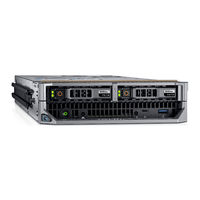User Manuals: Amulet Hotkey DXM420 Solution
Manuals and User Guides for Amulet Hotkey DXM420 Solution. We have 1 Amulet Hotkey DXM420 Solution manual available for free PDF download: User Manual
Amulet Hotkey DXM420 User Manual (40 pages)
PCoIP Remote desktop configuration
Brand: Amulet Hotkey
|
Category: Server
|
Size: 4 MB
Table of Contents
Advertisement
Advertisement
